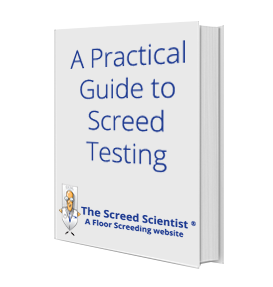
A Practical Guide to Screed Testing: What Do the Experts Say?

A Practical Guide to Screed Testing: What Do the Experts Say?
Calcium Carbide Moisture Test
Overview
The calcium carbide method is one of the most accurate and reliable methods of moisture testing, as the results do not just indicate the moisture levels for the surface of the screed, but it also provides an accurate measurement of the moisture present in the screed to a depth of up to 50% of its thickness.
How it’s done?
The calcium carbide test is carried out on site using a portable system containing a vessel or flask with a pressure gauge and a weighing scale. To conduct the test, a sample of the installed screed is removed from a depth of approximately 50% of the actual screed depth.
The removed sample is then weighed accurately and entered into a vacuum flask, along with a reagent, and shaken to mix the reagent with the sample. The free moisture in the sample reacts with the reagent to liberate acetylene gas, which leads to a rise in the pressure in the flask. The rise in pressure will be proportionate to the amount of free moisture in the sample, and the readings can be read directly from the pressure gauge as CM%.
Why is it done?
Though there are general guidelines about the drying time required for different screeds, the actual drying time can vary depending on the formulation of the screed, screed depth and external site conditions.
Laying the final floor finish before the screed has lost all its residual moisture can later lead to dampness issues, rippling and lifting of vinyl and mould problems, and it can be expensive to lift and replace the flooring once the final floor finish is laid. Carrying out an accurate moisture content assessment at the end of the screed’s drying period can help to make sure the screed is actually dry enough to take on the final floor finish. This is crucial to ensuring the quality and durability of the screed and the flooring, and can help avoid expensive remedial measures that arise from dampness issues.




